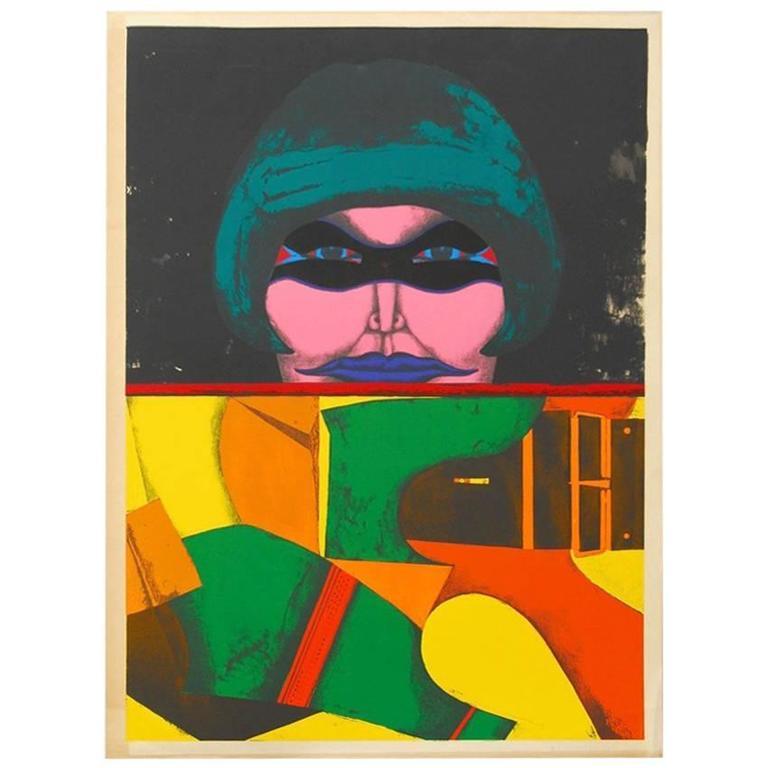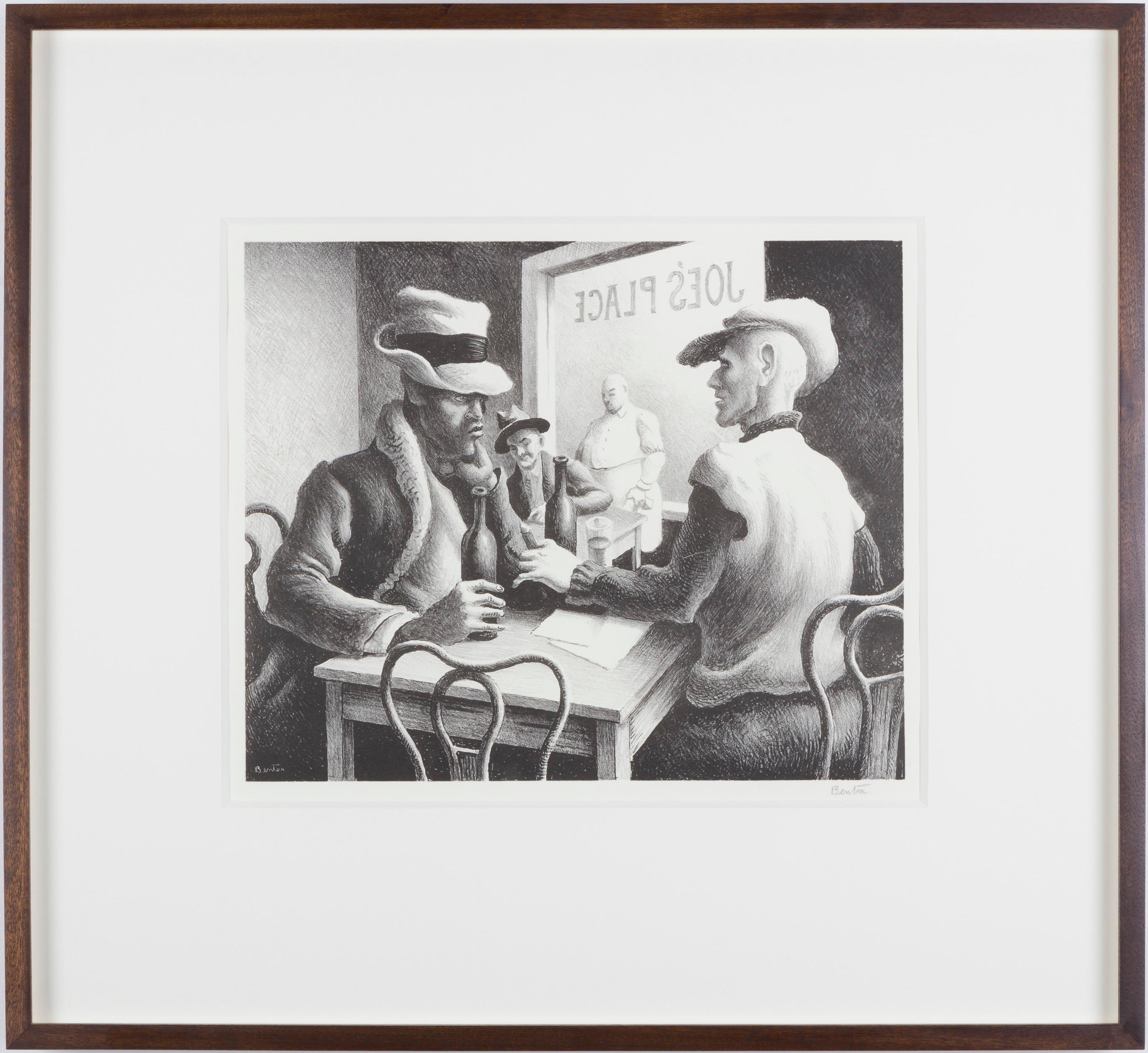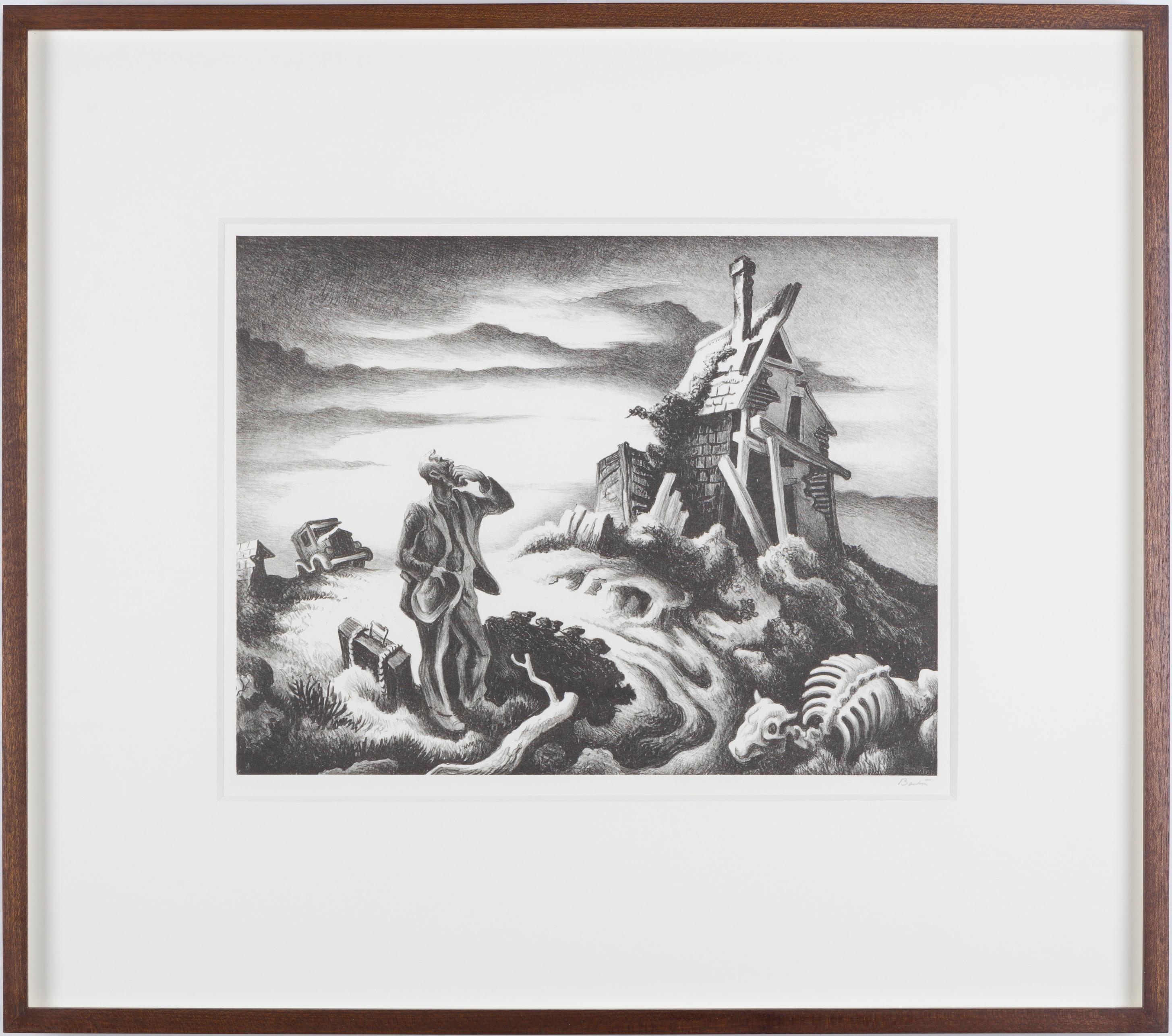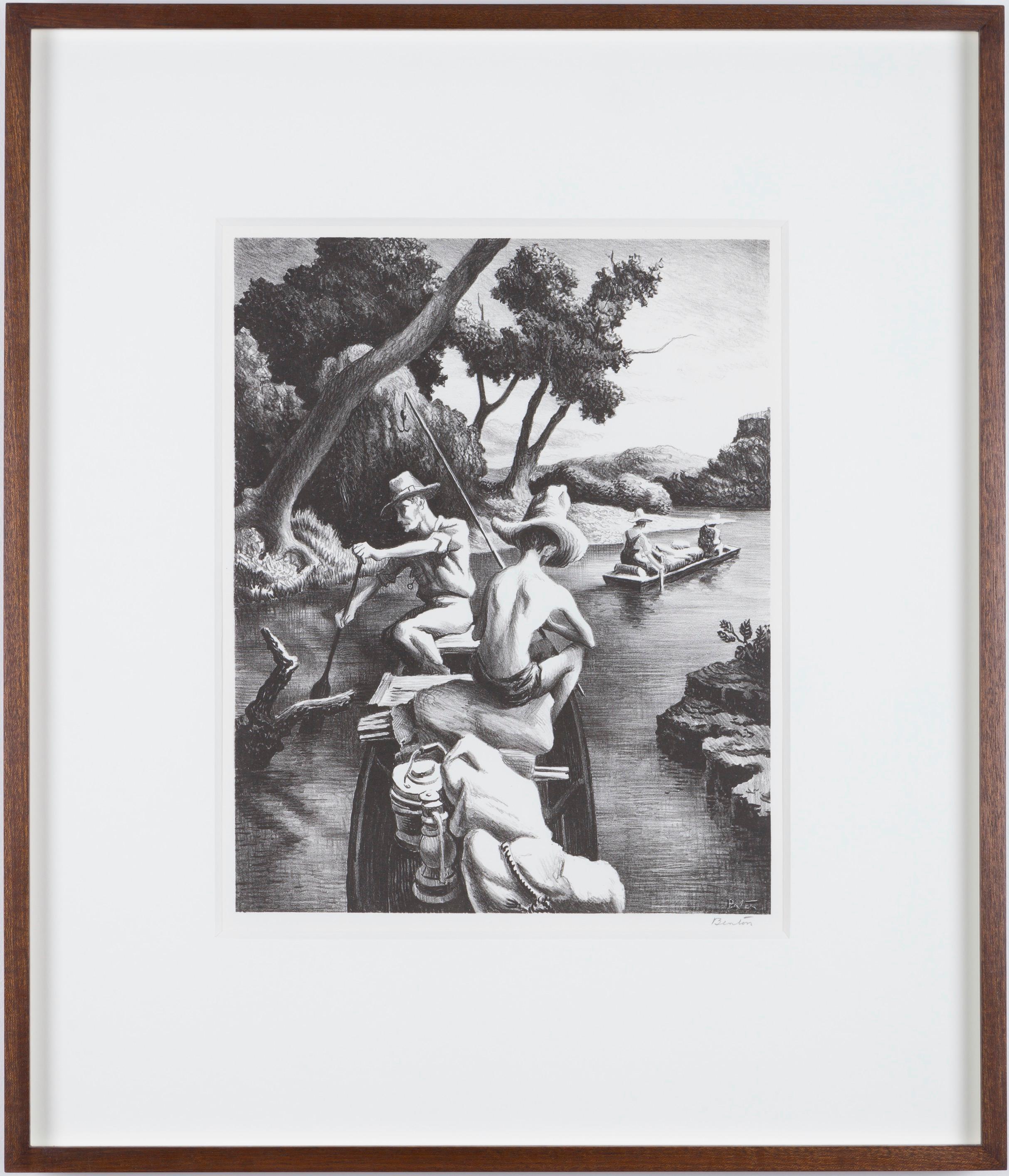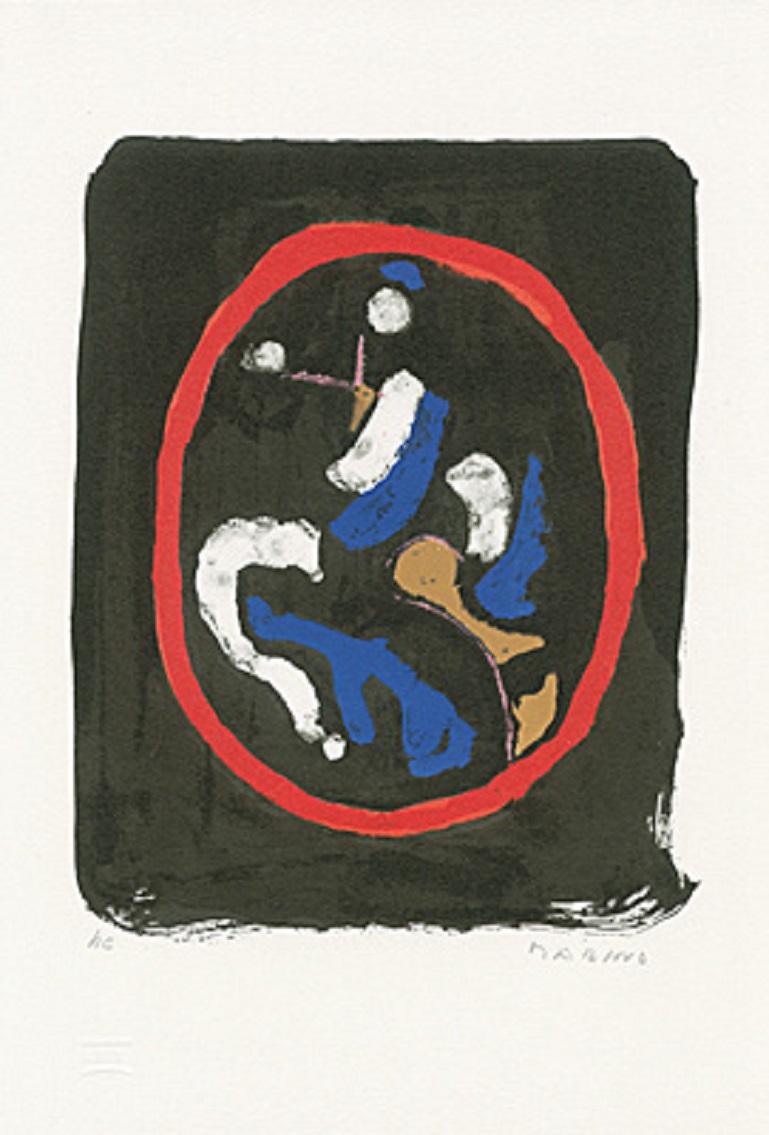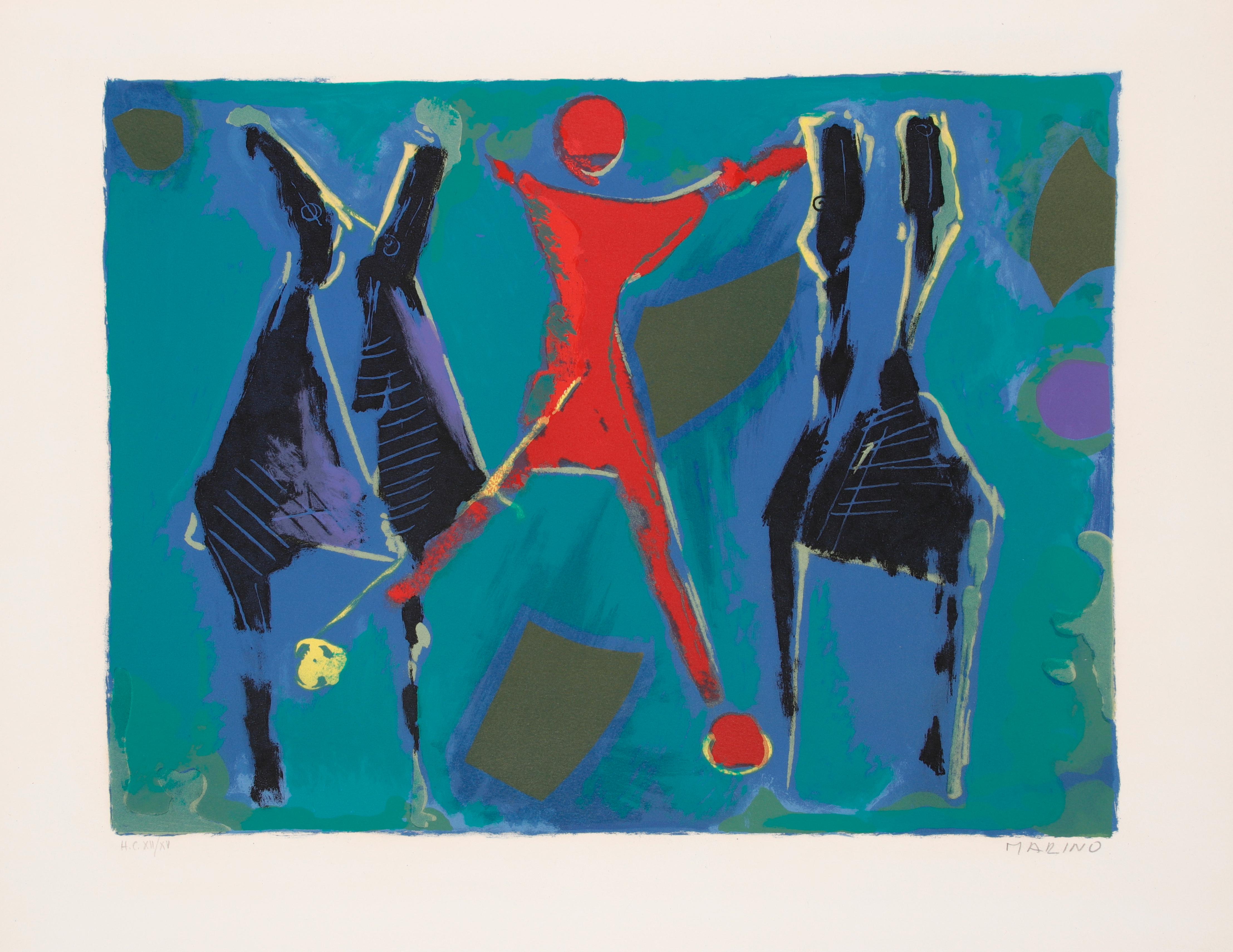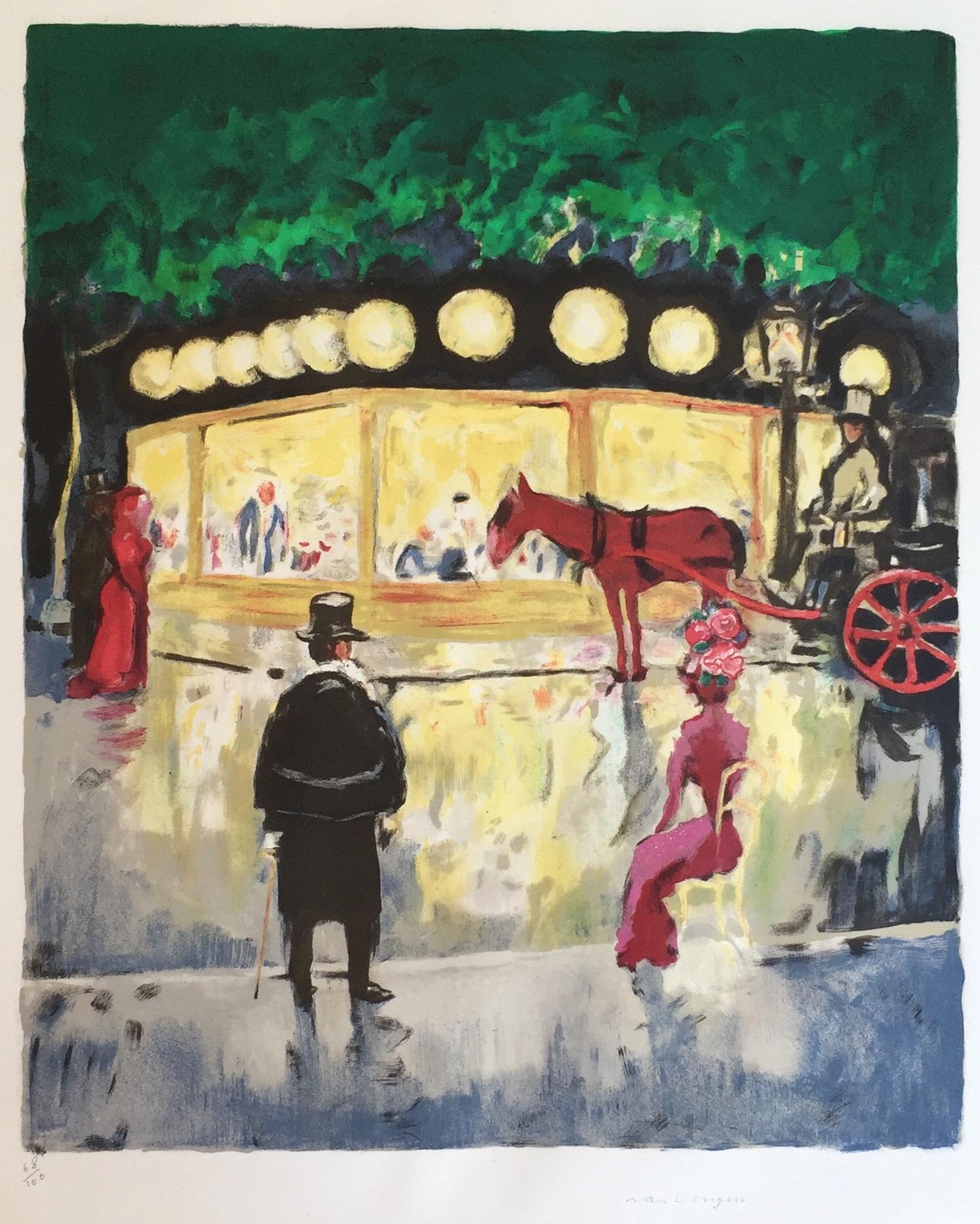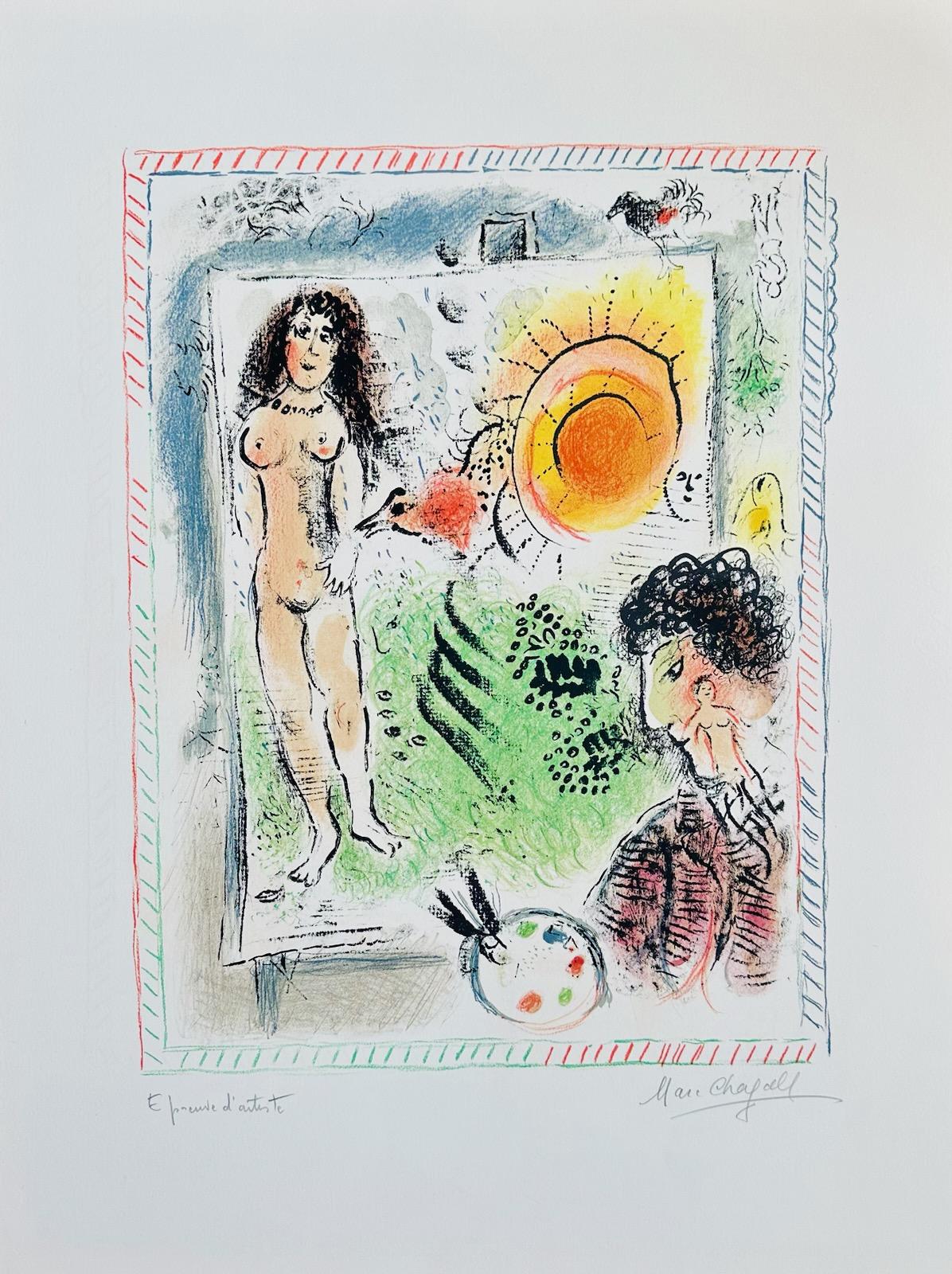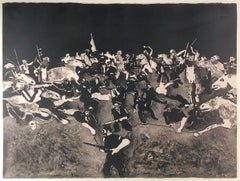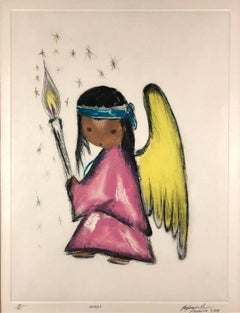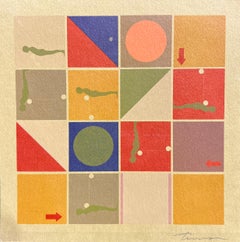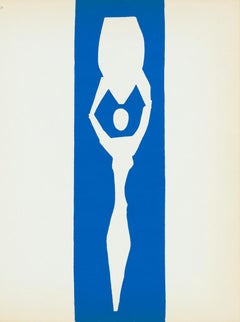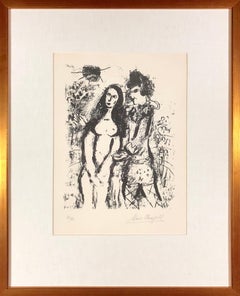
Le Clown Amoureux (Pencil Signed and Numbered)
View Similar Items
Marc ChagallLe Clown Amoureux (Pencil Signed and Numbered)1963
1963
About the Item
- Creator:Marc Chagall (1887 - 1985, French)
- Creation Year:1963
- Dimensions:Height: 27.5 in (69.85 cm)Width: 22.5 in (57.15 cm)
- Medium:
- Movement & Style:
- Period:
- Condition:
- Gallery Location:Missouri, MO
- Reference Number:1stDibs: LU74732344871
Marc Chagall
Described by art critic Robert Hughes as "the quintessential Jewish artist of the twentieth century," the Russian-French modernist Marc Chagall worked in nearly every artistic medium. Influenced by Symbolism, Fauvism, Cubism and Surrealism, he developed his own distinctive style, combining avant-garde techniques and motifs with elements drawn from Eastern European Jewish folk art.
Born Moishe Segal in 1887, in Belarus (then part of the Russian empire), Chagall is often celebrated for his figurative paintings, but he also produced stained-glass windows for the cathedrals of Reims and Metz, in France; for the United Nations, in New York; and for the Hadassah Hospital in Jerusalem, as well as book illustrations, stage sets, ceramics, tapestries and fine-art prints. Characterized by a bold color palette and whimsical imagery, his works are often narrative, depicting small-village scenes and quotidian moments of peasant life, as in his late painting The Flight into Egypt from 1980.
Before World War I, Chagall traveled between St. Petersburg, Paris and Berlin. When the conflict broke out, he returned to Soviet-occupied Belarus, where he founded the Vitebsk Arts College before leaving again for Paris in 1922. He fled to the United States during World War II but in 1947 returned to France, where he spent the rest of his life. His peripatetic career left its mark on his style, which was distinctly international, incorporating elements from each of the cultures he experienced.
Marc Chagall remains one of the past century’s most respected talents — find his art on 1stDibs.
- Custer's Last FightBy Fritz ScholderLocated in Missouri, MOFritz Scholder (1937-2005) "Custer's Last Fight" Lithograph Ed. 54/75 Signed and Numbered Site Size: approx 22 x 30 inches Framed Size: approx. 35 x 41.5 inches Born in Breckenridge, Minnesota, Fritz Scholder became a prominent Indian portrait, figure, and genre painter in Arizona. His father was part Indian, and Fritz Scholder chose to focus his art work on this part of his lineage and to express both an appreciation and disdain for Indian customs, traditions, and daily existence. He studied at the University of Kansas, Wisconsin State University, and with Wayne Thiebaud at Sacramento College in California. He earned an Master of Fine Arts Degree from the University of Arizona. A long-time resident of Scottsdale, Arizona, he has filled a number of artist-in-residence positions including Dartmouth College and the Oklahoma Summer Arts Institute. In his work, he frequently showed the harsh, realistic side of Indians' lives and deaths including the affects of alcohol and other dissipations, but some of his depictions are humorous such as Indians on horseback carrying umbrellas. His brush-work is generally swift, and the tone often sombre and surreal. A major influence on his work was the contemporary British artist, Francis Bacon, from whom Scholder adapted ironic distortions into his canvases. In Scottsdale, he lived in an adobe-walled oasis of palm trees and oleander, amid skulls and skeletons. In the garden, several of Mr. Scholder's sculptures feature skull-like heads. In the library, an 18th-century skull engraved with witchcraft symbols shared shelf space with books printed before 1500. And the porch had been converted into a skull room, complete with Mexican Day of the Dead...Category
1970s American Modern Figurative Prints
MaterialsPaper, Lithograph
Price Upon Request - AngelBy Ted (Ettore) De GraziaLocated in Missouri, MO"Angel" 1979 Color Lithograph Ed. 15/70 Pencil Signed and Number Image: Approx. 25 x 20 Framed Size: 34 1/2 x 28 1/4Category
1970s Modern Figurative Prints
MaterialsLithograph
Price Upon Request - Study/Falling Man (Series I)By Ernest Tino TrovaLocated in Missouri, MOStudy/Falling Man (Series I), 1967 By. Ernest Tino Trova (American, 1927-2009) Black Frame, Green Background Signed in Pencil Lower Right Unframed: 6 x 6 inches With Frame: 8.75 x 8....Category
20th Century American Modern Abstract Prints
MaterialsLithograph
Price Upon Request - Study/Falling Man (Series II)By Ernest Tino TrovaLocated in Missouri, MOStudy/Falling Man (Series II), 1967 By. Ernest Tino Trova (American, 1927-2009) Signed in Pencil Lower Right Color Lithograph Unframed: 6 x 6 inches With Frame: 8.75 x 8.5 inches Kn...Category
20th Century American Modern Abstract Prints
MaterialsLithograph
Price Upon Request - Devant le Tableau (Signed and Numbered)By Marc ChagallLocated in Missouri, MOLithograph on Arches Paper Pencil Signed Lower Right, "Marc Chagall" Numbered Lower Left Ed. 9/40, one of 40 impressions reserved for the artist aside from the standard signed editio...Category
1960s Modern Figurative Prints
MaterialsLithograph
Price Upon Request - Le Christ a l'Horloge, ParisBy Marc ChagallLocated in Missouri, MOMarc Chagall "Le Christ a l'Horloge, Paris" (Christ in the Clock) 1957 (M. 196) Color Lithograph on Arches Wove Paper Signed in Pencil "Marc Chagall" Lower Right Initialed "H.C." (Hors Commerce) Lower Left, aside from numbered edition of 90 *Floated in Gold Frame with Linen Matting, UV Plexiglass Sheet Size: 18 3/4 x 14 3/4 inches (47.5 cm x 38 cm) Image Size: 9 3/4 x 8 1/2 inches Framed Size: 28.5 x 24.25 inches Marc Chagall was a man of keen intelligence, a shrewd observer of the contemporary scene, with a great sympathy for human suffering. He was born on July 7, 1887 in Vitebsk, Russia; his original name was Moishe Shagal (Segal), but when he became a foremost member of the Ecole de Paris, he adopted French citizenship and the French spelling of his name. Vitebsk was a good-sized Russian town of over 60,000, not a shtetl. His father supported a wife and eight children as a worker in a herring-pickling plant. Sheltered by the Jewish commandment against graven images, the young Chagall never saw so much as a drawing until, one day, he watched a schoolmate copying a magazine illustration. He was ridiculed for his astonishment, but he began copying and improvising from magazines. Both Chagall's parents reluctantly agreed to let him study with Yehuda Pen, a Jewish artist in Vitebsk. Later, in 1906, they allowed their son to study in St. Petersburg, where he was exposed to Russian Iconography and folk art. At that time, Jews could leave the Pale only for business and employment and were required to carry a permit. Chagall, who was in St. Petersburg without a permit, was imprisoned briefly. His first wife, Bella Rosenfeld, was a product of a rich cultivated and intellectual group of Jews in Vitebsk. Chagall was made commissar for the arts for the area, charged with directing its cultural life and establishing an art school. Russian folklore, peasant life and landscapes persisted in his work all his life. In 1910 a rich patron, a lawyer named Vinaver, staked him to a crucial trip to Paris, where young artists were revolutionizing art. He also sent him a handsome allowance of 125 francs (in those days about $24) each month. Chagall rejected cubism, fauvism and futurism, but remained in Paris. He found a studio near Montparnasse in a famous twelve-sided wooden structure divided into wedge-shaped rooms. Chaim Soutine, a fellow Russian Jew, and Modigliani lived on the same floor. To Chagall's astonishment, he found himself heralded as one of the fathers of surrealism. In 1923, a delegation of Max Ernst, Paul Eluard and Gala (later Salvador Dali's wife) actually knelt before Chagall, begging him to join their ranks. He refused. To understand Chagall's work, it is necessary to know that he was born a Hasidic Jew, heir to mysticism and a world of the spirit, steeped in Jewish lore and reared in the Yiddish language. The Hasidim had a special feeling for animals, which they tried not to overburden. In the mysterious world of Kabbala and fantastic ancient legends of Chagall's youth, the imaginary was as important as the real. His extraordinary use of color also grew out of his dream world; he did not use color realistically, but for emotional effect and to serve the needs of his design. Most of his favorite themes, though superficially light and trivial, mask dark and somber thoughts. The circus he views as a mirror of life; the crucifixion as a tragic theme, used as a parallel to the historic Jewish condition, but he is perhaps best known for the rapturous lovers he painted all his life. His love of music is a theme that runs through his paintings. After a brief period in Berlin, Chagall, Bella and their young daughter, Ida, moved to Paris and in 1937 they assumed French citizenship. When France fell, Chagall accepted an invitation from the Museum of Modern Art to immigrate to the United States. He was arrested and imprisoned in Marseilles for a short time, but was still able to immigrate with his family. The Nazi onslaught caught Chagall in Vichy, France, preoccupied with his work. He was loath to leave; his friend Varian Fry rescued him from a police roundup of Jews in Marseille, and packed him, his family and 3500 lbs. of his art works on board a transatlantic ship. The day before he arrived in New York City, June 23, 1941, the Nazis attacked Russia. The United States provided a wartime haven and a climate of liberty for Chagall. In America he spent the war years designing large backdrops for the Ballet. Bella died suddenly in the United States of a viral infection in September 1944 while summering in upstate New York. He rushed her to a hospital in the Adirondacks, where, hampered by his fragmentary English, they were turned away with the excuse that the hour was too late. The next day she died. He waited for three years after the war before returning to France. With him went a slender married English girl, Virginia Haggard MacNeil; Chagall fell in love with her and they had a son, David. After seven years she ran off with an indigent photographer. It was an immense blow to Chagall's ego, but soon after, he met Valentine Brodsky, a Russian divorcee designing millinery in London (he called her Fava). She cared for him during the days of his immense fame and glory. They returned to France, to a home and studio in rustic Vence. Chagall loved the country and every day walked through the orchards, terraces, etc. before he went to work. Chagall died on March 28, 1985 in the south of France. His heirs negotiated an arrangement with the French state allowing them to pay most of their inheritance taxes in works of art. The heirs owed about $30 million to the French government; roughly $23 million of that amount was deemed payable in artworks. Chagall's daughter, Ida and his widow approved the arrangement. Written and submitted by Jean Ershler Schatz, artist and researcher from Laguna Woods, California. Sources: Hannah Grad Goodman in Homage to Chagall in Hadassah Magazine, June 1985 Jack Kroll in Newsweek, April 8, 1985 Andrea Jolles in National Jewish Monthly Magazine, May 1985 Michael Gibson...Category
1950s Modern Figurative Prints
MaterialsLithograph
Price Upon Request
- L'escargotBy Henri MatisseLocated in London, GBLithograph in colours based on the cut-out of the same title, 1952 From 'Verve' Magazine Volume IX, Nos 35 & 36: 'Dernières Oeuvres de Matisse 1950-54' Pr...Category
1950s Modern Figurative Prints
MaterialsLithograph
- Nu Bleu IIBy Henri MatisseLocated in London, GBLithograph in colours based on the cut-out of the same title, 1952 From 'Verve' Magazine Volume IX, Nos 35 & 36: 'Dernières Oeuvres de Matisse 1950-54' Pr...Category
1950s Modern Figurative Prints
MaterialsLithograph
- "Mother"By Raphael SoyerLocated in Southampton, NYSigned in pencil lower right AP (artist proof)lower left Sight size 18 x 12 in Overall size in museum quality matted frame 30 x 23 in Same lithograph is in permanent collection of th...Category
Mid-20th Century Modern Figurative Prints
MaterialsLithograph
$1,250 Sale Price43% Off - Descente aux enfersBy Georges BraqueLocated in Paris, FRLithograph on Japan Paper, 1961 handsigned by the artist in pencil 23 x 19 cm (image) - 32 x 25 cm (sheet) very good condition LCD2804Category
1960s Modern Figurative Prints
MaterialsLithograph
- Memnon - after Georges Braque - Lithograph - 1988 - Figurative PrintBy (after) Georges BraqueLocated in Sint-Truiden, BEColor lithograph after a gouache by Georges Braque from the edition of 398 published by Armand & Georges Israel in 1988. Printed signature. Artwork entirely made in France: from th...Category
1980s Modern Figurative Prints
MaterialsLithograph
- Hébé - after Georges Braque - Lithograph - 1988 - Figurative PrintBy (after) Georges BraqueLocated in Sint-Truiden, BEColor lithograph after a gouache by Georges Braque from the edition of 398 published by Armand & Georges Israel in 1988. Printed signature. Artwork en...Category
1980s Modern Figurative Prints
MaterialsLithograph
